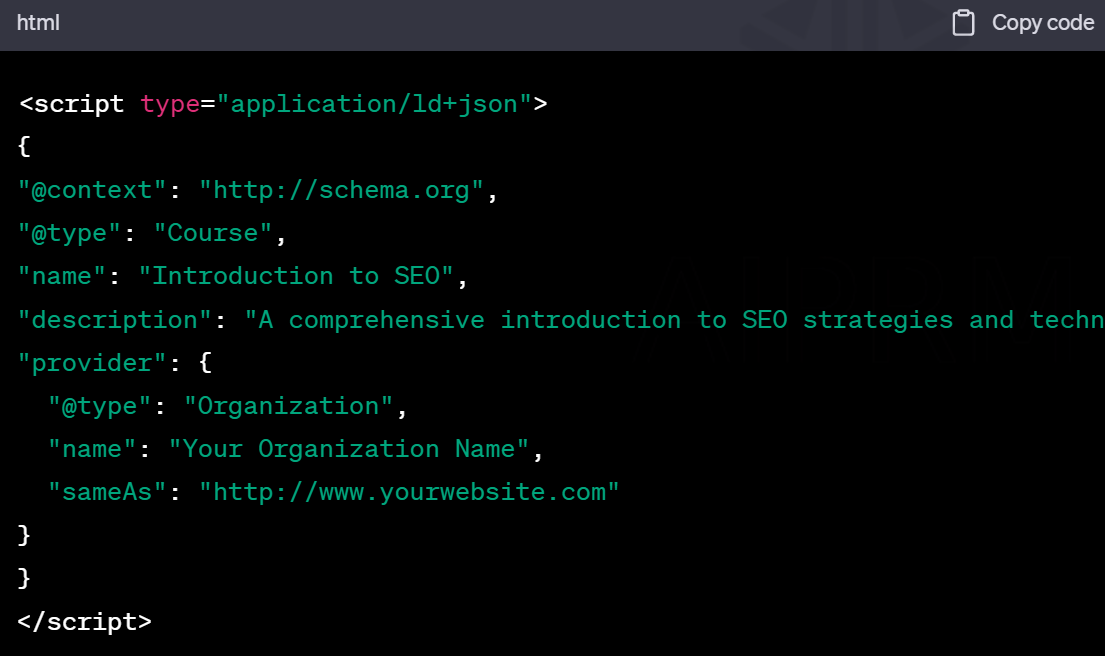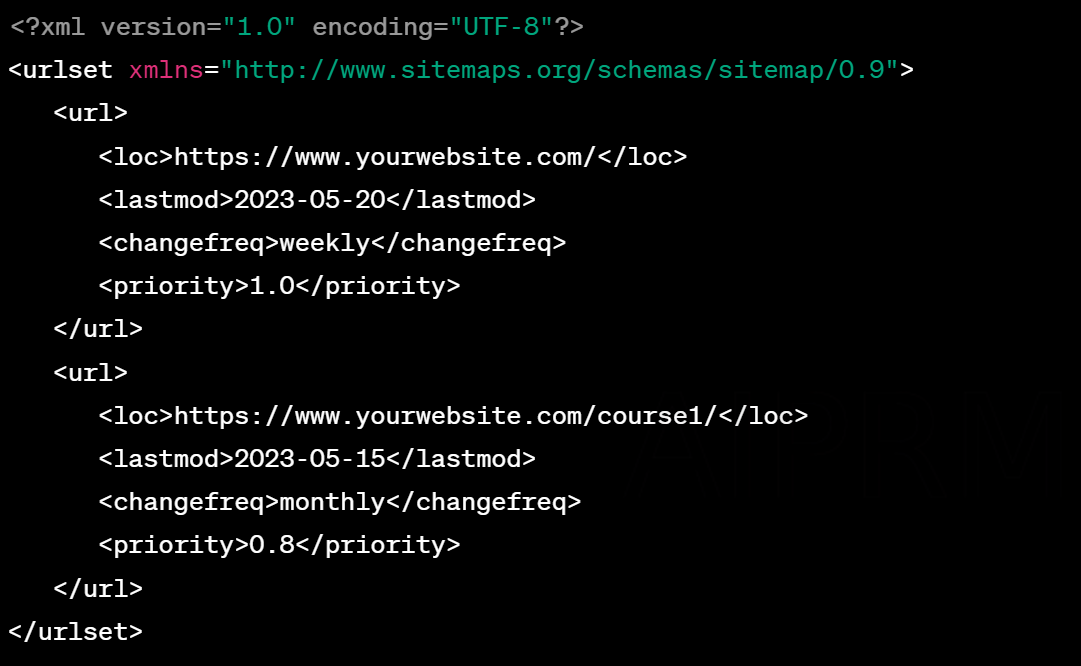21 min to read
In today's digital age, online courses have become popular for sharing knowledge and expertise with a global audience. Whether you're an entrepreneur, educator, or subject matter expert, creating and selling a successful online course can provide immense growth and financial independence opportunities. However, with the abundance of online courses available, it's essential to work smart and adopt strategies that set your course apart. In this blog post, we will explore six simple yet effective tips to help you create a compelling course and sell it out.

Identify a Target Audience
One of the key steps in creating a successful online course is to identify a target audience. When you clearly understand who your course is designed for, you can tailor the content, language, and delivery style to suit their needs and preferences. Conduct thorough market research to identify the demographics of your target audience. Consider their age, educational background, professional interests, and pain points. For example, if you're creating a course on digital marketing, your target audience might be small business owners who want to expand their online presence. You can create a course that resonates deeply with them by gaining insights into their desires, challenges, and aspirations.
You can conduct surveys or interviews with your potential audience to gather more detailed information about their specific needs and preferences. Utilize online tools and platforms that provide market research data to identify trends and gaps in the market. Analyze competitor courses to understand what they offer and find ways to differentiate your course.
Define Clear Learning Outcomes
To make your course engaging and valuable, define clear learning outcomes from the outset. Learners want to know what they will gain from investing their time and money in your course. Clearly articulate the skills, knowledge, or transformation they can expect to achieve by the course's end. Take a learner-centric approach and focus on practical, actionable, and relevant outcomes to their goals. For example, if you're teaching a course on public speaking, the learning outcome could be the ability to deliver persuasive and confident presentations.
You can also break down the learning outcomes into specific modules or lessons. Outline the key concepts and skills that participants will acquire in each section. Consider incorporating measurable outcomes, such as participants creating a portfolio or completing a project by the end of the course. This gives learners a sense of progress and accomplishment, further motivating them to complete the course.
Create High-Quality Content
The success of your course depends on the quality of its content. Develop a comprehensive curriculum that is organized, logical, and easy to follow. Break down complex concepts into digestible modules or lessons, ensuring each builds upon the previous one. Incorporate multimedia elements such as videos, audio clips, interactive quizzes, and downloadable resources to enhance the learning experience.
Invest time in researching and preparing content that is informative, practical, and provides actionable insights. Of course, consider the online course creation time, as you want to make sure your content is well-structured, engaging, and delivers on the promises made in the course description. Consider including case studies, examples, and real-life scenarios to illustrate concepts and make them more relatable to learners. Also, consider using different teaching formats to cater to various learning styles. Incorporate visual aids, such as infographics or diagrams, to enhance understanding. Include practical exercises and assignments that allow learners to apply the knowledge they've gained. Provide supplementary resources such as reading materials, recommended books, or external references to deepen their understanding of the subject. Regularly update your content to ensure its relevance and keep up with industry advancements.
Leverage Engaging Teaching Methods
Engaging teaching methods are vital to keeping learners motivated and eager to continue their journey. Avoid monotonous lectures and incorporate interactive elements throughout your course. Encourage discussions, group activities, and provide opportunities for hands-on learning. For example, you can create discussion forums or host live Q&A sessions to foster engagement and encourage learners to interact with each other. Use case studies, real-life examples, and storytelling techniques to make the content relatable and memorable. Incorporate different learning styles, such as visual, auditory, and kinesthetic, to cater to diverse learners. You can create a dynamic and enriching learning environment by employing diverse teaching methods.
Furthermore, create quizzes or challenges that allow learners to earn points or badges as they progress. Use interactive simulations or virtual labs to provide hands-on experience in a controlled environment. Implement peer-to-peer learning opportunities where learners can collaborate and share their insights and experiences. Encourage self-reflection and critical thinking by posing thought-provoking questions and providing opportunities for learners to articulate their understanding through written or video responses.
Build a Strong Online Presence
To attract potential learners, you need to establish a strong online presence. Leverage social media platforms, create a dedicated website, and build an email list to connect with your target audience. Regularly share valuable content related to your course topic, engage in discussions, and provide sneak peeks of your course to generate interest. Cultivate a community around your expertise by offering insights and addressing queries to position yourself as a trusted authority. Interact with your audience, listen to their feedback, and adapt your course accordingly.
Additionally, consider creating a blog or vlog where you share valuable insights and tips related to your course topic. Engage with online communities and groups relevant to your course, and participate in discussions or offer your expertise. Collaborate with other influencers or experts in your field to reach a wider audience. Consider hosting webinars or live sessions to provide a taste of your teaching style and course content. Offer free resources or mini-courses to showcase your expertise and build trust with potential learners.
Implement Effective Marketing Strategies
Even the most exceptional course will struggle to sell without effective marketing strategies. Develop a comprehensive marketing plan that includes various channels such as email marketing, social media advertising, content marketing, and collaborations with influencers or industry experts. Craft compelling sales copy that highlights the unique value proposition of your course. Utilize testimonials and success stories from past participants to build trust and credibility. Offer limited-time promotions or early bird discounts to create a sense of urgency and encourage early enrollment. Continuously analyze and refine your marketing efforts based on feedback and data to maximize your course's reach and impact. Monitor your marketing campaigns' performance, track conversions, and adjust your strategies accordingly to ensure optimal results.
You can also create a landing page specifically designed to showcase the benefits and features of your course. Utilize persuasive copywriting techniques to communicate the value and outcomes of your course. Create engaging video trailers or previews that glimpse the course content. Collaborate with influencers or industry experts to promote your course to their audience. Implement referral programs or affiliate partnerships to incentivize others to promote your course.

Creating and selling a successful online course requires a strategic approach and diligent effort. By identifying your target audience, defining clear learning outcomes, creating high-quality content, employing engaging teaching methods, building a strong online presence, and implementing effective marketing strategies, you can increase your chances of making your course a resounding success. Remember, success may not come overnight, but with persistence, continuous improvement, and a passion for sharing knowledge, you can build a thriving online course business and make a lasting impact on your learners' lives. So, work smart, apply these tips, and watch your course sell out!
OK, now you have your content ready and published, it's time to make it reach as many people as possible within your target. Here's a step-by-step guide for promoting your online course:
1. Build a Strong Online Presence:
You want to create a website as the hub for all your marketing efforts. This could be www.yourcourse.com. Ensure it's professional, easy to navigate, and offers all the necessary information about your course.
First and foremost, your website is your digital storefront. Just like a physical store, it's the first place potential students will go to learn about your course. For example, if you're offering a course on creative writing, your site, say www.LearnSeoWithCodedesign.com, should be the one-stop shop where interested learners can get the complete lowdown: what the course covers, who's teaching it, how long it lasts, what they'll achieve by the end, and how to enroll.
The Importance of Web Design
Now, imagine walking into a store with products scattered everywhere, poor lighting, and no clear signs pointing you where you need to go. You'd likely turn around and walk out, right? The same applies to your website. It needs to be clean, professional, easy to navigate, and mobile-friendly (because, let's face it, we're all glued to our phones these days). A well-designed site tells your audience that you value quality and pay attention to details, just like in your courses.
Perfect Content
Your website should do more than look good—it should be packed with valuable content. Include testimonials from past students, sneak peeks of course material, or a compelling video that outlines the course's benefits. For instance, for your creative writing course, you could offer a free download of a story written by a past student or a video of a best-selling author endorsing your course. This kind of content helps potential students understand the value they'll get from your course.
Harnessing the Power of SEO
If a tree falls in a forest and no one can hear it, does it make a sound? This age-old question applies to your website too. You could have the best-looking, most informative website in the world, but it won't mean a thing if nobody can find it. This is where Search Engine Optimization (SEO) comes in. Using the right keywords in your site's content can improve its visibility on search engines. So, when someone types in "best creative writing course," your website has a better chance of appearing in their search results.
Engaging with Your Audience
Finally, your website should be where potential students can engage with you. This could be through a chat function where they can ask real-time questions, a comment section on your blog posts, or links to your social media accounts. When students feel connected and engaged, they're more likely to trust you and consider enrolling in your course.

2. Blogging and SEO:
Start a blog on your website. It's an effective way to attract organic traffic from search engines. Your blog posts should offer valuable information related to your course subject. For example, if your course is about digital marketing, you might write blog posts on "10 Key Trends in Digital Marketing for 2023." If you are reading this article you understand the power of blogging.
Showcase Your Expertise:
A blog allows you to flex your intellectual muscles. Let's imagine you've crafted a stunning online course about graphic design. Your blog could be filled with posts such as "Top 10 Typography Trends in 2023" or "How to Choose the Right Color Palette for Your Brand." By sharing your knowledge and industry insights, you're not just tossing random info into the void, you're showing potential students that you know your stuff. They'll be more likely to trust your course because they see the value you're already offering for free.
Keywords, Baby, Keywords:
Here's where SEO steps in. You want your blog to appear in search results when folks look up topics related to your course. If your course is about vegan cooking, sprinkle keywords like "vegan recipes," "plant-based cooking," or "vegan nutrition" throughout your blog posts. But remember, it's a sprinkle, not a dump truck. Overstuffing can actually hurt your SEO. Tools like Google's Keyword Planner (ads.google.com/home/tools/keyword-planner/) can help you find the right balance.
Reciprocity in Action:
Ever heard of the principle of reciprocity? It's a social psychology nugget that states that people feel compelled to return a favor when one is given. So, if you're providing valuable, free content through your blog, readers are more likely to feel an urge to give back. This could translate into signing up for your course, sharing your content, or even just sticking around to read more of your posts.
Keep 'Em Coming Back for More:
A regularly updated blog is like a TV series - if it's good, people keep returning for the next episode. Ensure your blog is your niche's "Game of Thrones" (without the controversial ending). Regular updates keep your audience engaged and help with SEO, as search engines favor websites with fresh content.
Building a Community:
Your blog isn't just a one-way street. Encourage readers to leave comments, answer their questions, and stimulate discussions. This could lead to the creation of a community where like-minded individuals can connect and share ideas. It adds another value to your course as students know they'll be part of this lively community.

3. Social Media Marketing:
Social media platforms are a great way to reach your target audience. You could use Facebook (www.facebook.com), Instagram (www.instagram.com), LinkedIn (www.linkedin.com), Twitter (www.twitter.com), etc. Post engaging content related to your course and encourage followers to share it.
Choose the Right Platforms
Different social media platforms attract different demographics. Instagram and TikTok, for example, tend to attract a younger crowd, while Facebook and LinkedIn have a broader age range. If you're offering a coding course for kids, Instagram might be a better platform than LinkedIn. You gotta go where your audience is hanging out, right?
Create Engaging Content
Think of social media like a party – nobody likes the guy who only talks about himself. Same thing applies here. Mix in educational content, entertaining stuff, inspiring quotes, and sure, some promotional posts about your course. Let's say you're running a photography course, you could run a "photo of the week" contest and share your students' best snaps.
User-generated Content:
There's nothing like a bit of social proof to help sell your course. Encourage your students to share their experiences and achievements on their own social media accounts using a unique hashtag, like #YourCourseSuccess. Repost their content on your platforms. It's a win-win – they get a shoutout and you get authentic testimonials.
Engage and don't be shy
Don’t be a post-and-run kind of account. Respond to comments, ask questions, and make your followers feel heard. If someone tweets about your course, tweet back with a thank you or a fun GIF. Make your social media platforms a two-way conversation.
Social Paid Advertising
Platforms like Facebook and Instagram offer pretty detailed targeting options for ads. You can target folks based on age, location, interests, behaviors, and more. A well-placed ad can really boost your course's visibility. Think about running a campaign offering a special discount for the first 100 sign-ups – that's sure to catch people's attention!

4. Email Marketing:
Create a newsletter and encourage people to sign up for it on your website. Send regular updates about your course, sneak peeks, and special offers. A platform like MailChimp (www.mailchimp.com) could be a great tool for this.
Building Your Email List
Offer a lead magnet on your website – something valuable your audience will receive in exchange for their email address. It could be a free eBook, a checklist, or a mini-course.
Welcome Email
When someone signs up for your list, send them a warm welcome email. Introduce yourself, give them a bit more info about your course, and let them know what kind of content they can expect in your emails. It's like inviting them into your home – make them feel comfy.
Valuable Content
No one likes an inbox full of spam, so make sure your emails are adding value. Provide tips, insights, and resources related to your course topic. If you're offering a course on graphic design, you could send out a quick tip every Tuesday, like "Tip Tuesday: How to Use Negative Space in Design."
Promote Your Course
While most of your emails should be value-add, you should definitely promote your course too. Offer exclusive discounts to your email subscribers or give them early access to new courses. Remember, these are your VIPs – treat 'em like it.
Track Your Results
Use the analytics provided by your email marketing platform to see which emails are getting opened, which links are getting clicked, and what's driving the most sign-ups for your course. This can help you refine your strategy and focus on what's working best. Keep experimenting, keep tweaking, and keep your eyes on the prize!

5. Paid Advertising:
Use Google Ads (ads.google.com) and social media ads to reach a broader audience. Target your ads based on demographics, interests, and behaviors that align with your ideal student.
The beauty of paid advertising is that it's like a turbo boost for your online course's visibility. Let's take Google Ads, for example. Picture this – you're chillin', typing something into the search bar, and BAM! You first see an ad for what you were looking for. That's the power of Google Ads! You can target specific keywords related to your course like "online digital marketing course," and get your course at the top of search results.
Now, how about social media ads? Have you ever been casually scrolling through your Facebook feed when an ad catches your eye? These ads can be highly targeted based on demographics, interests, and behavior. If you're selling a course on food photography, for instance, you can target folks who follow food blogs, have photography listed as an interest, and live in specific locations where you believe your course will thrive.
Don't forget the power of retargeting, either! Ever browsed for a new pair of shoes and then found shoe ads following you all over the internet? That's retargeting! By dropping a cookie onto the visitor's browser, you can remind people about your course even after they've left your site.
Finally, remember that with paid advertising, you're in control. You decide your daily budget, who you want to target, and how long your campaign runs. Want to test the waters before diving in? No problem! Run a small movement, see how it goes, and tweak it as necessary.

6. Affiliate Marketing:
Affiliates can promote your course to their audience and earn a commission for each sale. Platforms like ShareASale (www.shareasale.com) can help you set up an affiliate program.
Think of affiliate marketing as having friends helping you promote your course. Each friend tells their people about your course and earns a commission for any sale they bring in. It's a win-win situation! They earn some bucks, you get more students.
So, how does this work?
Let's say you're offering a yoga course. You partner with a health and wellness blogger, who has thousands of followers interested in fitness and wellbeing. They write a post about your course or share it in their newsletter. Every time one of their followers buys your course through their unique affiliate link, they get a cut.
Services like ShareASale or ClickBank can make this process super easy. They connect you with potential affiliates, track sales made through affiliate links, and manage payouts. It’s like a matchmaking service for your course!
Influencers can also make great affiliates. Imagine having a popular fitness influencer on Instagram sharing a post about how they're loving your yoga course. Their followers trust them, so an endorsement from them can go a long way.
Building strong relationships with your affiliates is the key to a successful affiliate program. Keep them updated, provide them with promotional materials, and offer them fair compensation. They're not just affiliates; they're your partners in this venture.
Remember, affiliate marketing can take a bit to get rolling, but once it does, it's like a snowball effect - growing larger and more powerful with each affiliate and each sale. It's a fantastic way to increase your reach and add more students to your online course!
7. Collaborations and Partnerships:
Collaborate with influencers or brands that align with your course topic. They can help promote your course to their audience.
One of the great ways to boost visibility and credibility is through collaborations and partnerships. Say your online course is all about plant-based nutrition. You might connect with a popular vegan chef or food blogger, collaborate on creating some unique recipes, and then share them on both your platforms.
The power of partnerships isn't just about influencers; you can also partner with complementary businesses. For example, if you're offering a course on graphic design, partnering with a local print shop could be a great fit. They promote your course to their customers, you offer a discount on your course for their customers - it's a win-win!
Don't forget about podcasters and YouTubers! These folks are always on the lookout for interesting content for their shows. Offering to be a guest on their show to discuss a topic related to your course can be a great way to reach a broader audience. And bonus, it adds a level of credibility to your course too!
Host a joint webinar or live event with a partner. This can be a powerful way to engage potential students and gives both you and your partner a chance to showcase your expertise.
Keep in mind, successful collaborations and partnerships are all about providing mutual value. The goal should be to create something awesome that benefits both your audiences and helps each other grow. It's all about that collaboration magic, ya know?

8. Hosting Webinars or Live Q&A Sessions:
Host free webinars or live Q&A sessions on platforms like Zoom (www.zoom.us) or YouTube Live (www.youtube.com). These sessions give potential students a taste of what they can expect from the course.
Remember, consistency, creativity, and engagement are key to successful marketing. It's not enough to just put content out there; you have to engage with your audience, answer their questions, and show them why your course is worth their investment.
- Webinars and live Q&A sessions are like free samples of the online course world. It tastes what you're offering, enticing potential students to want the full course. For example, if your course is on coding, you might host a free webinar on "Intro to Python Coding for Beginners."
- Don't forget to record your webinars! You can share the recordings later as a resource for your subscribers or even use snippets as promotional material.
- Q&A sessions are also an amazing opportunity to connect directly with your audience and answer any questions they might have about your course. It's a laid-back, no-pressure environment where potential students can get a feel for your teaching style and course content.
- These live sessions can also be a great time to offer exclusive deals or discounts for your course. Everyone loves a good deal, right? And offering it during a webinar can create that sense of urgency that encourages people to sign up.
- Finally, don't forget to promote your webinars or live sessions! You want to make sure people know they're happening. Share them on your social media, send out an email blast to your subscribers, maybe even partner with another creator to help spread the word.
In conclusion, collaborations, partnerships, webinars and live Q&A sessions, can help you connect with your audience on a deeper level. It's all about creating that human connection and showing your potential students that you're not just an online course but a community and a resource for learning.
Considering that CPA for this industry can be very high due to tight competition. Keep your eyes open for SEO strategies.
Advanced SEO techniques tips for promoting your course
Search engine optimization (SEO) is critical to driving organic traffic to your online course. Here are some advanced SEO strategies and coding examples that could help:
Schema Markup
Schema markup is a type of microdata that makes it easier for search engines to parse and interpret the information on your web pages. Schema.org provides a collection of shared vocabularies webmasters can use to markup their pages in ways recognized by major search providers.
For an online course, you might consider using the "Course" schema:

Accelerated Mobile Pages (AMP)
AMP is a Google-backed project designed to make really fast mobile pages. Having a website that loads quickly is crucial for SEO. Use AMP to improve your mobile site speed.
A basic AMP HTML file might look like this:

Hello, AMP world.
XML Sitemap
Sitemaps are a way to inform search engines about pages on your site. While a sitemap won't guarantee that all pages will be crawled and added to the search engine index, it will certainly improve your chances. A basic sitemap example would look like this:

https://www.yourwebsite.com/
2023-05-20
weekly
1.0
https://www.yourwebsite.com/course1/
2023-05-15
monthly
0.8
Page Speed Optimization
Google has stated that site speed, and as a result, page speed, is a signal used by its algorithm to rank pages. Improving site speed can be achieved by compressing images, leveraging browser caching, minifying CSS, Javascript, and HTML, and reducing redirects.
Responsive Design
Ensuring your website is mobile-friendly is critical since Google has moved to mobile-first indexing. This means that Google predominantly uses the mobile version of the content for indexing and ranking. Ensure your website has a responsive design that adapts to different screen sizes.
Content Optimization
Content is king when it comes to SEO. Make sure your course descriptions and content are keywords optimized. This doesn't mean stuffing keywords into your content but ensuring the content flows naturally and the keywords fit in the context.
While implementing advanced SEO strategies is important, don't overlook the basics - a well-structured, easy-to-navigate, and content-rich website will always perform well in search engine rankings.
FAQS - Frequently Asked Questions
How can identifying a target audience enhance the success of your online course?
Identifying a target audience can significantly enhance the success of your online course by ensuring that your content, marketing efforts, and teaching methods are tailored to the specific needs, interests, and learning preferences of your ideal students. This focused approach enables you to create course materials that resonate deeply with your audience, making them more likely to enroll and engage with your content. Knowing your target audience also allows for more effective marketing strategies, as you can use channels and messaging that appeal directly to those most likely to benefit from your course. Additionally, understanding your audience helps in crafting compelling course descriptions and learning outcomes that speak directly to the outcomes your learners are seeking, thereby increasing enrollments and student satisfaction.
Why is defining clear learning outcomes crucial for your course's value?
Defining clear learning outcomes is crucial for your course's value because it sets clear expectations for what learners will achieve by completing the course. Clear learning outcomes help potential students understand the tangible skills, knowledge, or competencies they will gain, making it easier for them to decide whether the course meets their needs or goals. From an instructional design perspective, clear outcomes guide the development of course content and assessments, ensuring that all materials are aligned with the intended goals. For instructors, well-defined outcomes provide a framework for measuring student success and course effectiveness, enabling continuous improvement. For students, they offer a roadmap for learning, increasing motivation, and engagement by providing clear goals to strive towards.
What strategies can be employed to create high-quality content for your course?
Creating high-quality content for your course involves several key strategies:
- Start with thorough research to ensure your content is accurate, up-to-date, and relevant to your target audience.
- Define clear learning objectives for each section or module to guide the development of content that meets specific educational goals.
- Incorporate a variety of content formats, such as videos, readings, interactive activities, and quizzes, to cater to different learning styles and keep learners engaged.
- Use real-world examples and case studies to illustrate concepts and demonstrate their applicability in practical settings.
- Ensure content is well-organized and easy to navigate with a logical structure that progressively builds on previous material.
- Engage subject matter experts to contribute insights and lend credibility to your course.
- Seek feedback from a pilot group of learners or peers to identify areas for improvement and refine your content before launch.
- Invest in high-quality production values, especially for video and audio elements, to enhance the learning experience.
How can engaging teaching methods improve student retention and satisfaction?
Engaging teaching methods can significantly improve student retention and satisfaction by making the learning experience more interactive, enjoyable, and relevant. Techniques such as interactive discussions, real-time quizzes, and collaborative projects encourage active participation, helping students to better understand and retain information. Incorporating practical, hands-on activities can enhance skill development and ensure that knowledge is applicable in real-world contexts. Personalizing learning experiences, by allowing students to choose topics of interest or navigate their learning path, can increase engagement and motivation. Providing immediate feedback through assessments or interactive elements helps students recognize areas for improvement and fosters a sense of progress. Overall, engaging teaching methods create a dynamic learning environment that supports student success and satisfaction.
In what ways does building a strong online presence support your course sales?
Building a strong online presence supports your course sales by increasing visibility and credibility among potential learners. An effective online presence can be achieved through a professional website, active social media profiles, and engaging content such as blogs, podcasts, or webinars. This not only helps in showcasing your expertise and the value of your course but also enables you to reach a wider audience through SEO, social media marketing, and content marketing strategies. By engaging with your audience online, you can build trust and foster a community of learners who are more likely to enroll in your courses. Additionally, a strong online presence provides platforms for sharing testimonials and success stories from past students, further enhancing your course's appeal to prospective learners.
What are effective marketing strategies to attract potential learners to your course?
Effective marketing strategies to attract potential learners to your course include:
- SEO optimization of your course landing page and content to ensure high visibility in search engine results.
- Content marketing, such as blogging or creating free resources, to demonstrate your expertise and provide value to your target audience.
- Social media marketing to engage with potential learners on platforms they frequent, using targeted ads and organic posts.
- Email marketing campaigns to nurture leads by sharing valuable content, course updates, and special offers.
- Partnering with influencers or industry experts to leverage their audiences and gain credibility.
- Offering free trials or introductory modules to give potential students a taste of your course content and teaching style.
- Utilizing testimonials and case studies from satisfied students to build trust and showcase the impact of your course.
- Running webinars or live Q&A sessions to directly engage with your audience and address any questions or concerns about your course.
How can leveraging SEO techniques boost your course's visibility online?
Leveraging SEO techniques can boost your course's visibility online by ensuring that your course website or landing page ranks higher in search engine results for relevant keywords. This involves optimizing your site's content, titles, meta descriptions, and URLs with keywords that potential students are likely to use when searching for courses like yours. Additionally, creating quality, relevant content regularly can attract backlinks from other reputable sites, further improving your site's authority and search ranking. Implementing technical SEO best practices, such as improving site speed, ensuring mobile-friendliness, and creating an XML sitemap, also enhances visibility. By increasing your course's search engine ranking, you're more likely to attract organic traffic, thereby increasing enrollments.
What role does blogging play in promoting your online course?
Blogging plays a crucial role in promoting your online course by helping to establish you as an authority in your field, driving traffic to your course page, and engaging potential learners. Regular blog posts on topics relevant to your course content can improve SEO, making it easier for potential students to discover your course through search engines. Blogging also provides valuable content that can be shared on social media and other platforms to reach a wider audience. Additionally, blogs can be used to address common questions or challenges faced by your target audience, showcase success stories from past students, and provide insights into the benefits and outcomes of taking your course. Engaging, informative blog content can build trust and interest in your course among potential learners.
Why is social media marketing critical for the success of your online course?
Social media marketing is critical for the success of your online course because it provides a platform to reach and engage with a vast, diverse audience where they spend a significant amount of their time. Social media allows for targeted advertising, enabling you to reach potential learners based on specific demographics, interests, and behaviors. It also offers opportunities for organic engagement through content sharing, discussions, and community building, helping to establish a rapport with your audience and create a loyal following. Through social media, you can share course updates, success stories, and valuable content, increasing visibility and interest in your course. Effective social media marketing can drive traffic to your course page, boost enrollments, and support the development of a vibrant learning community.
How can email marketing campaigns be optimized to promote your course effectively?
Email marketing campaigns can be optimized to promote your course effectively by segmenting your email list based on subscriber interests, behavior, and demographics to deliver personalized and relevant content. Use compelling subject lines and engaging content that highlights the value and benefits of your course, including testimonials and success stories. Incorporating clear calls-to-action (CTAs) that direct recipients to your course page or landing page can improve conversion rates. Testing different email elements, such as subject lines, content formats, and sending times, through A/B testing can help identify the most effective strategies for your audience. Additionally, automating a series of welcome emails or educational content can nurture leads and build anticipation for your course launch. Regularly analyzing campaign performance and adjusting your strategy based on data-driven insights ensures continuous improvement and effectiveness of your email marketing efforts.

About Bruno GavinoBruno Gavino is the CEO and partner of Codedesign, a digital marketing agency with a strong international presence. Based in Lisbon, Portugal, with offices in Boston, Singapore, and Manchester (UK) Codedesign has been recognized as one of the top interactive agencies and eCommerce agencies. Awarded Top B2B Company in Europe and Top B2C company in retail, Codedesign aims to foster personal relationships with clients and create a positive work environment for its team. He emphasizes the need for digital agencies to focus on data optimization and performance to meet the increasingly results-driven demands of clients. His experience in digital marketing, combined with a unique background that includes engineering and data, contributes to his effective and multifaceted leadership style. |

About CodedesignCodedesign is a digital marketing agency with a strong multicultural and international presence, offering expert services in digital marketing. Our digital agency in Lisbon, Boston, and Manchester enables us to provide market-ready strategies that suit a wide range of clients across the globe (both B2B and B2C). We specialize in creating impactful online experiences, focusing on making your digital presence strong and efficient. Our approach is straightforward and effective, ensuring that every client receives a personalized service that truly meets their needs. Our digital agency is committed to using the latest data and technology to help your business stand out. Whether you're looking to increase your online visibility, connect better with your audience, get more leads, or grow your online sales. For more information, read our Digital Strategy Blog or to start your journey with us, please feel free to contact us. |
CodeDesign is leading:
- Digital Agency
- Digital Marketing Agency
- Digital Ecommerce Agency
- Amazon Marketing Agency



Add comment ×